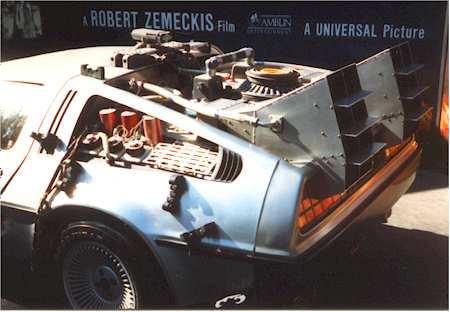Bill DeBlasio is right: New York City really is “two cities”. But his version of a “rich” New York City and a “poor” New York City has always been the case, not only in New York but in every other major city on the planet.
No, the real “two cities” in this election is different and unique. One “city” is comprised of those of us over 35 who can remember a crime-ridden, filthy, poorly-run city – an almost unlivable city that was nearly bankrupted by high-tax, high regulation, anti-commerce, anti-police policies run by incompetent party hacks who deemed New York “ungovernable” – and those who have known only the safer, cleaner, better-run, more vibrant, pro-commerce city that older New Yorkers voted for in 1993 when they rejected the policies Bill DeBlasio advocates today.
The biggest challenge facing New York City Republican mayoral contender Joe Lhota is that his two predecessors – both first elected as Republicans – did their job too well. So well, in fact, that the “old” New York City mostly doesn’t exist in the memory of a large proportion of the electorate.
Its been nearly twenty years since Rudy Giuliani, Bill Bratton, Jack Maple and a cadre of other top NYPD and Giuliani Administration officials – including Joe Lhota—first started the make-over of New York City from a dirty, dangerous, crime-filled urban failure to the city we know now.
Back then, drugs, sex and mayhem were available on nearly every corner of Manhattan after the sun had set (and even before), save for a few well-policed block of the business districts and a few residential blocks that housed New York’s elite and effete on the Upper East Side. (There were “Two Cities” under Beame, Koch, and Dinkins, too: safe and unsafe.)
Today’s electorate is a new generation. Nearly half of today’s New Yorkers were aged 14 or younger when Giuliani & Co. made the first dramatic steps to curb New York’s crime rate in early 1994. Few of them likely even remember the New York City of the early 1990’s. A quarter of the city’s population hadn’t even been born when Giuliani & Co started cutting crime and returning neighborhoods to safety with Jack Maple’s CompStat policing statistics.
More than 25% of the city’s population is between the ages of 18-34; that is, 25% of the people can vote, but can’t remember how bad the city was before the Giuliani & Co. makeover.
Speak to an early 30’s New Yorker, and he’ll be able to tell you about Times Square and 42nd Street as the home of “The Lion King” and “Madame Tussaud’s Wax Museum”. He probably won’t know about the pimps who ran 15 year old prostitutes under theater marquees that read “XXX Rated LIVE Sex Shows”. He might complain, vociferously, about how his rights were violated by cops who politely, but firmly, “stop and frisk” him. But he won’t recollect how often thuggish, poorly-trained — and overwhelmingly white — cops routinely and rudely abused their authority before Giuliani & Co. upped NYPD recruitment standards and made “Courtesy, Professionalism, & Respect” mandatory training. He won’t know that when Bill DeBlasio was a student at NYU in the early 1980’s, the streets of the “Alphabet City” section of the East Village – a neighborhood where he and his friends go to hear music and party – was a veritable “no man’s land” disputed by warring drug gangs. Children that lived in the neighborhood couldn’t even play in Tompkins Square Park, now one of the city’s nicest parks. Back then, Tompkins Square was a “shanty city”, filled 24/7/365 with anarchists, drug addicts, and emotionally disturbed persons that city officials ignored in the name of “tolerance” and that the neighborhood had to endure.
Speak to a New Yorker in their 30’s, and they might complain about how hard it is to get theatre tickets or reservations at a top restaurant. But they probably won’t remember that Manhattan’s midtown streets emptied out in the evening when Mayors Beame, Koch, and Dinkins ran the city. That was largely because New York’s oppressively high hotel “Occupancy Tax” – and its reputation as a dirty, crime-ridden city – kept tourist and business visitors out of the city. They won’t remember the exodus of New York businesses that fled New York City for suburban industrial parks because top executives chose to live in low-tax/no-tax Connecticut rather than New York City. (Better to relocate their businesses to avoid the commute into the city and its accompanying non-resident tax on wages than maintain an office in Midtown.)
Speak to a New Yorker in their 30’s, and they might complain about crowding on the subways. But they won’t recall how subway cars were covered, inside and out, with so much graffiti that stepping into a new, untouched car made riders feel out-of-place. They won’t remember the horrible stench that greeted riders when they entered most stations; the stench most memorably described by a former colleague of mine from Houston who – after I had given him subway directions to his hotel at the Waldorf said, “But your subways all smell like pee!” And they certainly won’t remember the fear that many women felt riding the subways alone after about 8:00PM, because crime was so rampant.
So, New York is, indeed, a “Tale of Two Cities”; those of us who can remember pre-Giuliani New York and those who can’t. But Bill DeBlasio’s campaign platform isn’t really about “two cities”. Its about going “Back to the Future”.



Recent Comments